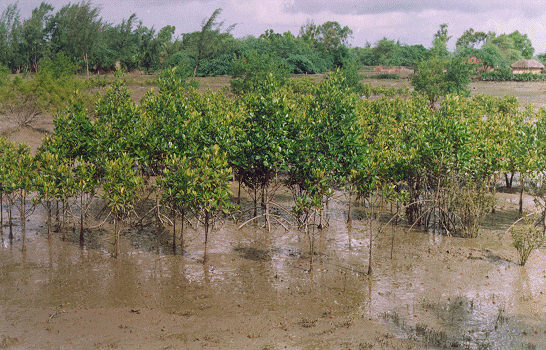 |
Medium to tall tree, upto 20 m high, deliquiscent
branched, branches spreading horizontally and erect marked with fallen
leaf-scars.
Trunk not conspicuous and suppported by
profuse stilt roots
Stilt root profused, looping from the
lower trunks and horizontal branches, woody, slender cylindrical 3 m or
more long, 2.5 -8.0 cm diameter.
Leaves dark glossy green, thick
and cuticularised, coriaceous elliptic, 15 cm long and 8 cm broad, apex
pointed, mucronate.
Inflorescence upto 5.2 cm long, cyme,
opposite decussate, ebracteate.
Flowers ebracteate, pedicellate, pedicel
0.5 cm long, flattened, green, glabrous, complete, regular, hermophrodite,
erect
Calyx persistent in fruit
Sepals 4, polysepalous, sepals ovate,
entire,acute, fleshy, thick, green, glabrous, valvate, 1.2 cm long, 0.7
cm broad, persistent, superior, equal length
Corolla white; petals 4, polypetalous,
superior, lanceolate, entire, acute, irregular pubescent, curved margin,
thick, fleshy, valvate, alternate to sepals
Fruit coriaceous 2.5 - 3.5 cm long
Seedling germination modified epigeal-viviparous,
seedling upto 70 cm or more
Economic Importances : Woods
are used as timber and fuel or charcoals. Stem bark contains useful tannin
materials, The tannin content is around 20%. The bark powder is astringent
and is used for the treatment of diabetes, hemorrhage, haematuria and angina.
Young fruits are edible.
